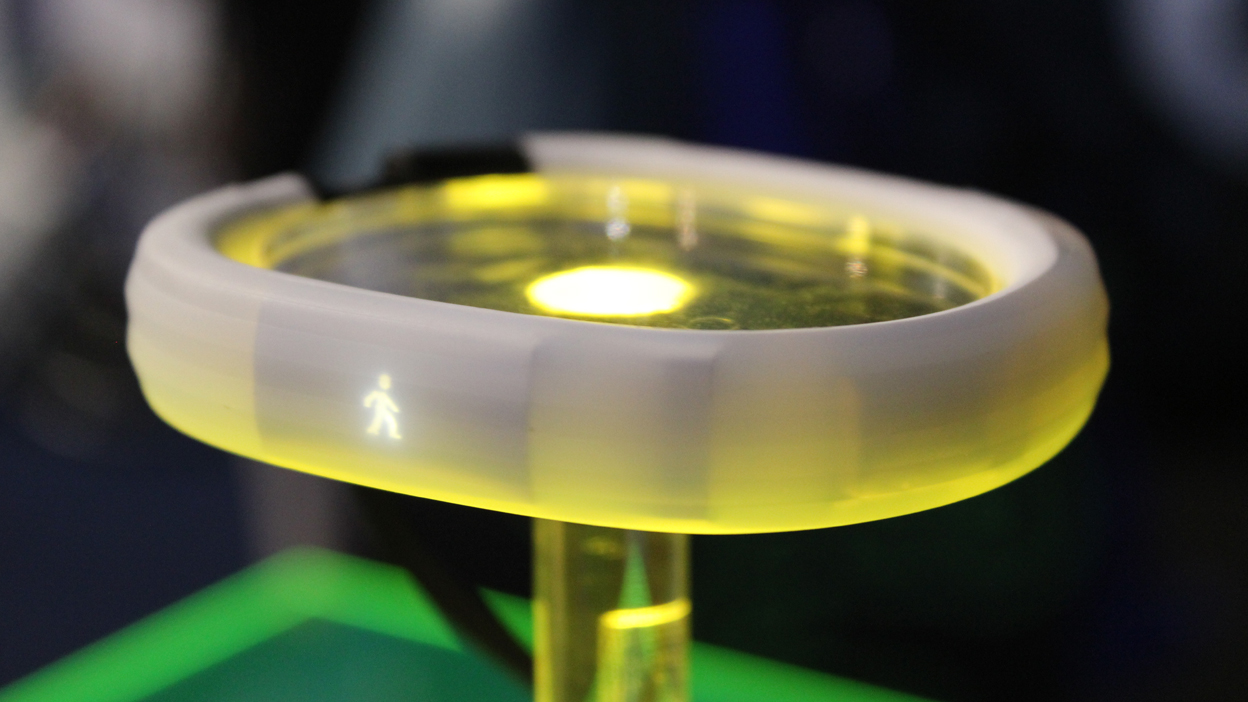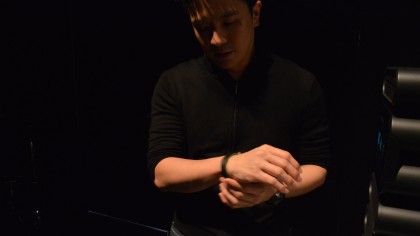Razer CEO talks Nabu, the Internet of Things and making products for gamers
And whether we'll ever see a Razer smartwatch

When Razer announced its Nabu smartband at CES 2014, a puzzled head scratch skipped from scalp to scalp. Or was it a twitch from wrist to wrist?
Razer, best known for its gaming laptops and peripherals, has been working on Nabu for three and a half years. It may have come out of left field for some, but Razer CEO Min-Liang Tan sees Nabu as a natural progression for the company's product line.
We sat down with Tan at the Vegas show to get the low-down on the double-screened strap. He was running on two hours of sleep, but was as verbose and passionate about Razer's latest endeavor as ever.
Tan divulged that the prototype Nabu smartband will see some changes (as prototypes are wont to do) before public release. Namely, he wants it to rock a blockier, less sporty look - one that will mesh with someone wearing a suit, he said.
But there's much more to Nabu, and Razer, than an evolving sense of style. Tan laid out for TechRadar his thoughts on the world of wearables, where his band fits in and what it really means to make products for gamers.
TechRadar: Safe to say that Nabu surprised a lot of people. Why did Razer decide to get into wearables?
Min-Liang Tan: We've been working on it for quite some time, before wearables became [big]. Traditionally, we've always worked on crazy stuff, and we've launched them when they're good and ready. We've always been able to go into markets where people look at us and go, 'You guys really didn't think of that?' We thought it would be the same thing this year. The weirdest thing is that on the way here suddenly terms like Internet of Things and wearables just exploded.
Get daily insight, inspiration and deals in your inbox
Sign up for breaking news, reviews, opinion, top tech deals, and more.
To put things in perspective, you know Internet of Things, right? What is Internet of Things? It's connected devices, devices that connect back to the cloud and things like that. We've been shipping them since 2008, and we've probably got one of the largest Internet of Things platforms in the world. We've got at least a million users that log on a daily basis through their devices. So it wasn't so much thinking that we could get into this space. We thought we were - and we still think we are - pioneering this space.
TR: But when people think of you guys, they think of the gaming laptops, accessories, mice. You're saying Razer is also in the Internet of Things, and Nabu is a part of that?
Tan: When we heard of Internet of Things, somebody said, 'Dude, you are actually one of the biggest Internet of Things companies in the world right now.' We sell connected devices probably about one every four or five seconds at this point in time somewhere in the world. And we're truly global in the sense that we're in North America, Europe and Asia.
On top of that, most of our devices call back to the cloud. Over a million users will at least be active [on Razer's software platform] on a daily basis, and we think we will triple this number by the end of the year. Registered users is much, much larger, but daily actives has crossed a million users every day, which is pretty cool.
Today they're connecting through being on a PC, being on mobile devices. Nabu will be a great way where we will connect them 24/7. Even when they're sleeping, even when they're eating, working out, stuff like that. We think it's going to be a phenomenal experience for all of them.

TR: You've clearly seen how wearables have gained momentum in recent months. What are your thoughts on the tech as a whole?
Michelle was previously a news editor at TechRadar, leading consumer tech news and reviews. Michelle is now a Content Strategist at Facebook. A versatile, highly effective content writer and skilled editor with a keen eye for detail, Michelle is a collaborative problem solver and covered everything from smartwatches and microprocessors to VR and self-driving cars.
